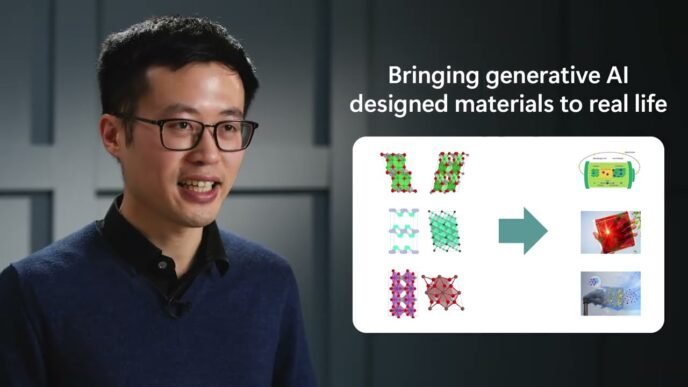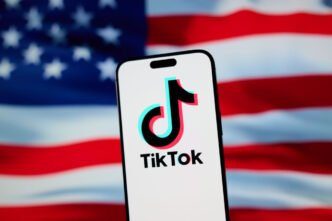Nvidia, a global leader in AI and graphics technology, is introducing three innovative NIM (NeMo Inference Microservices) designed to enhance safety, security, and control for AI agents in enterprises. These tools, which are part of the Nvidia NeMo Guardrails framework, aim to address growing concerns about content safety, focused communication, and software restrictions. With enterprises showing interest in AI agents but adopting them at a measured pace, Nvidia’s latest efforts could play a pivotal role in bridging the gap between innovation and practical deployment.
Nvidia’s Latest NIM Microservices
Nvidia’s three new NIM microservices bring specialized functionalities to strengthen the reliability of AI agents. Here’s a breakdown:
- Content Safety Microservice
- Ensures AI agents avoid generating harmful or biased content.
- Focuses on maintaining ethical AI outputs.
- Conversation Control Microservice
- Restricts discussions to pre-approved topics.
- Prevents agents from veering into unintended or sensitive areas.
- Jailbreak Prevention Microservice
- Safeguards software restrictions to avoid unauthorized modifications.
- Mitigates risks associated with bypassing built-in safety measures.
These microservices complement Nvidia’s existing NeMo Guardrails, an open-source toolkit aimed at providing developers with advanced tools to create secure and robust AI applications.
Addressing Enterprise Challenges with AI
Adopting AI agents is far from straightforward for enterprises. Nvidia recognizes that a one-size-fits-all approach doesn’t meet the diverse needs of organizations. Instead, the company suggests using specialized, lightweight models as guardrails to fill gaps left by general policies.
As Nvidia highlighted in their press release, “Complex agentic AI workflows require tailored solutions that go beyond broad global policies.”
Why Enterprises Are Cautious About AI Adoption
Despite the rapid pace of AI innovation, enterprises have been cautious about adopting AI agents. A recent Deloitte studyoffers insights:
- Current Adoption:
- 25% of enterprises are already using AI agents or plan to by 2025.
- Projected Growth:
- By 2027, 50% of enterprises are expected to integrate AI agents.
While these numbers reflect growing interest, they also underscore the slower-than-expected adoption rate compared to the pace of AI advancements.
The Need for Enhanced AI Security
Enterprises often hesitate due to concerns about security and operational risks. Key challenges include:
- Bias and Harmful Outputs
AI models sometimes generate unethical or inappropriate content. Nvidia’s content safety microservice directly addresses this issue. - Unintended Topics in Conversations
Without focused guardrails, AI agents can stray into off-limits areas. Nvidia’s conversation control ensures discussions remain on track. - Software Vulnerabilities
Jailbreaking attempts pose significant risks, potentially undermining safety protocols. Nvidia’s solution reinforces restrictions to prevent such exploits.
Enterprise Interest in AI Agents: A Statistical Perspective
To understand the dynamics of AI agent adoption, let’s examine some key statistics:
| Year | Enterprises Using AI Agents | Projected Growth |
|---|---|---|
| 2023 (Current) | ~25% | |
| 2025 | Expected adoption growth | ~30% |
| 2027 | ~50% | Major milestone in AI use |
These numbers reflect a steady but cautious approach by businesses as they assess the risks and benefits of integrating AI technologies.
Salesforce’s Vision and Reality Check
Salesforce CEO Marc Benioff recently predicted that over a billion AI agents would run on Salesforce platforms within a year. While this paints an optimistic picture, the reality may differ:
- AI adoption is growing but not at the same pace as innovation.
- Enterprises often require clear evidence of security, reliability, and ROI before fully embracing new technology.
How Nvidia’s Tools Can Accelerate Adoption
Nvidia’s new microservices aim to alleviate enterprise concerns, making AI agents more secure, reliable, and appealing for practical use. Here’s how:
1. Building Trust Through Safety Measures
By focusing on ethical AI, Nvidia’s tools help enterprises mitigate reputational and operational risks.
2. Ensuring Compliance
Tools like conversation control and jailbreak prevention enable businesses to maintain strict compliance with industry regulations.
3. Streamlining Development
Open-source frameworks like NeMo Guardrails simplify the integration of advanced safety features, reducing development time.
A Pivotal Moment for AI Adoption
Nvidia’s initiatives come at a crucial time. As noted in their blog post, “We are at the crest of a pivotal moment in scientific history where AI tools can revolutionize industries.”
However, for this revolution to succeed, enterprises need robust frameworks like Nvidia’s NeMo Guardrails to navigate the complexities of AI deployment.
An Example: AI in Healthcare
One area where Nvidia’s tools can make a significant impact is healthcare. AI agents here need to ensure:
- Data Privacy: Patient information must remain confidential.
- Accurate Diagnosis: AI must avoid generating biased or incorrect recommendations.
- Controlled Outputs: Conversations with patients should adhere to medical guidelines.
By deploying Nvidia’s specialized microservices, healthcare providers can address these challenges effectively.
To explore Nvidia’s latest advancements, visit Nvidia NeMo Guardrails.
Nvidia’s release of new microservices under the NeMo Guardrails framework demonstrates a proactive approach to addressing the challenges enterprises face with AI adoption. These tools provide enhanced safety, control, and reliability, ensuring that businesses can integrate AI agents confidently.
With a steady increase in enterprise interest and Nvidia’s commitment to innovation, the adoption of AI agents is poised to become more practical and widespread in the coming years. Only time will reveal the full impact of these advancements, but Nvidia’s contributions are undoubtedly steering the industry in the right direction.
Also Read:
Nvidia’s Investment in MetAI: Pioneering AI-Powered Digital Twins













